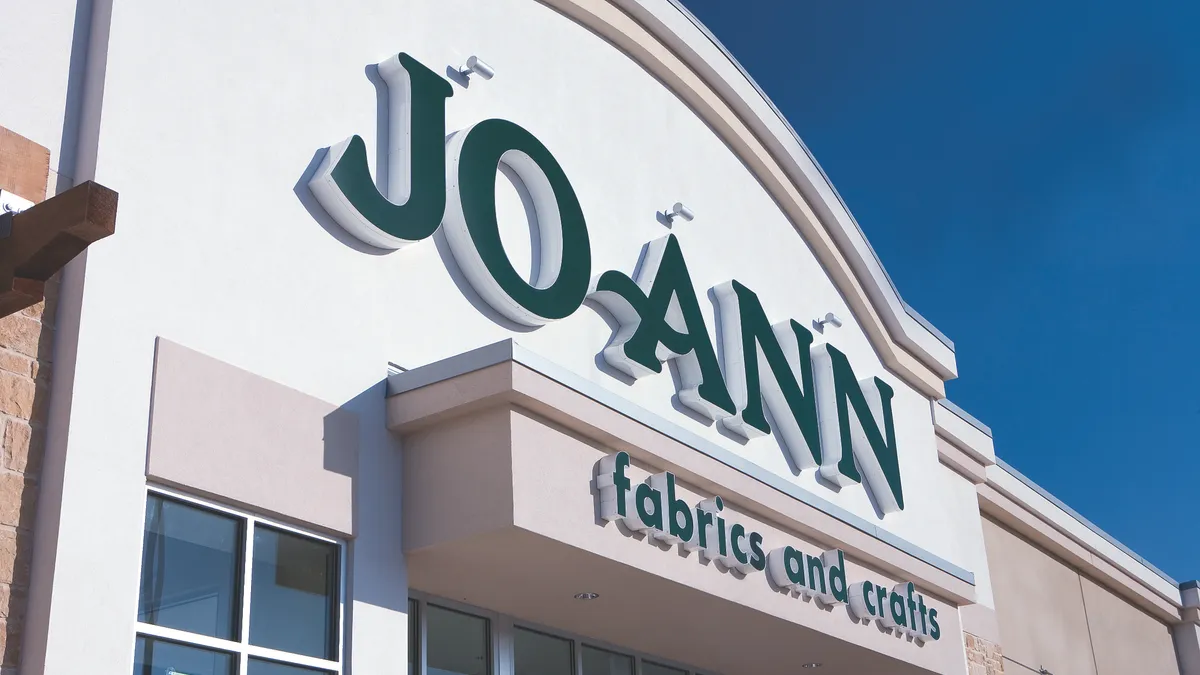In the spring, Joann Stores faced a perfect storm. At the same time COVID-19 put one of the craft retailer's main products — cloth fabric — in high demand, the company was forced to close half its retail locations. Online traffic surged to three times the company's holiday volume, right about when corporate employees were told to work from home.
"Our technology was stressed; our people were stressed; our procedures and policies were stressed," said Joann CIO Varadheesh Chennakrishnan.
By scaling its order management system, the company de-stressed its technology (and employees) in multiple ways, including slowing down fulfillment promises, ramping up the use of the curbside pickup, and reconfiguring how it ships from stores.
Reacting to the shock of new demand
March isn't normally a hot online retail month in the U.S. But 2020 isn't a normal year.
"What we saw across Joann and many retailers was they hit peak volumes that even beat out holiday season," said Jeanette Barlow, VP of strategy and offering management for IBM Sterling, the order management system (OMS) Joann has used since 2013. "Stores went dark by requirement, so the only way for their clients to engage with them was to go online."
To start, Joann did not "take on all that demand without knowing we could actually fulfill it," Chennakrishnan said. The company delayed order fulfillment by about 10 days. "That way, we did not frustrate our teammates or our customers."
The retailer worked with IBM Sterling, which is cloud based, to beef up use of the OMS, much like it would during the holiday season — except this ramp up wasn't planned.
"Our technology was stressed; our people were stressed; our procedures and policies were stressed."

Varadheesh Chennakrishnan
CIO of Joann Stores
Joann had implemented buy online pickup in store (BOPIS) about two years prior to the pandemic, said Chennakrishnan, and were able to quickly flip that to curbside pickup in a few days for those locations that were forced to close.
It wasn't a completely fluid customer experience. Customers "were very patient with us because they understood we were doing something that we never did before, and we were trying to figure it out and be as considerate as we can," he said. Curbside pickup remains an option for customers who do not want to go into retail stores.
Shifting to a new supply chain future
While the pandemic hasn't disappeared, Joann's stores are now open, and retail habits have changed. E-commerce platform Kibo Commerce found that BOPIS demand surged more than 500% during the pandemic, peaking in April with 563% more demand this year than in April 2019.
In June, BOPIS was up 374% from the year before — still a sizable shift.
BOPIS is convenient for customers because they don't have to shop a store during a still-active pandemic. It's a boon for retailers because it cuts down on shipping costs, as customers are doing the transporting of the item itself.
But it's a "major inventory challenge," said Abhishek Roy, assistant professor of supply chain management at the Temple University Fox School of Business. "In most modern warehouses, when something is getting picked up, the picker is also scanning the product and recording it in real time. That's not something that is happening in a retail store."
That's because customers are also shopping in the store at the same time people are shopping online. So, the item the online shopper has bought might be in someone's physical cart. Point-of-sale purchases are not always updated in real time either. That means the item might be out of the store by the time the online order is placed.
"If you go to a BOPIS/curbside pickup model, you will be able to mitigate some of this if you have a centralized order system," Roy said.
Chennakrishnan said purchases in Joann's brick and mortar locations update in the OMS about every 15 to 20 minutes. If an order can't be fulfilled in the customer's chosen store, Joann will check the OMS to see if that or items is in another nearby store, or can be shipped to the customer's home, and then reach out to that customer with those options.
"Stores went dark by requirement, so the only way for their clients to engage with them was to go online."

Jeanette Barlow
VP of Strategy and Offering Management at IBM Sterling
The majority of Joann's fulfillment "happens through our store network," said Chennakrishnan, with only about 5% going through distribution centers and a sliver of orders conducted as drop shipments. Before the pandemic, 100 of its 860 retail locations did ship from store.
"Stores were a critical part of their fulfillment network," said Barlow. "Since they were not just using distribution centers, they were able to have more flexibility and have more responsive interactions with clients."
Joann has since expanded ship from store to 260 locations. Five of those stores are now "super hubs," which have larger back rooms and are being reconfigured to look more like warehouses, for easier and faster picking by employees.
Chennakrishnan added that it's still a work in progress. "You, as a customer, will not see any difference in the layout because it's invisible to you," he said. "It's done in the background to better satisfy customer requirements."
This story was first published in our weekly newsletter, Supply Chain Dive: Operations. Sign up here.




















